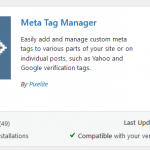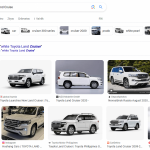Images for Website
|
Getting your Trinity Audio player ready...
|
Why Using Original Images is Best for SEO
Using original images on your website is crucial for several reasons, especially when it comes to search engine optimization (SEO). Original images help in establishing the uniqueness and authenticity of your content, which can positively impact your website’s SEO performance. Search engines like Google value originality and quality, so using unique images can improve your website’s credibility and visibility in search results.
When you use original images, you avoid potential copyright issues that may arise from using stock photos or images that are widely available on the internet. By creating your own visuals or hiring a photographer/designer to do so, you ensure that your images are exclusive to your website, making them more valuable in the eyes of search engines.
Original images also provide an opportunity to incorporate relevant keywords into the image file names and alt text, further enhancing your SEO efforts. Additionally, original images tend to be more engaging for users, which can lead to higher user engagement metrics such as longer dwell time and lower bounce rates – all of which are factors that search engines consider when ranking websites.
The Importance of Alt Text for SEO
Alt text, short for alternative text, is a crucial element for SEO when it comes to images on a website. Alt text provides a textual description of an image, which serves multiple purposes:
Accessibility: Alt text is used by screen readers to describe images to visually impaired users who rely on assistive technologies to navigate the web. By providing descriptive alt text, you make your website more accessible to all users, including those with disabilities.
SEO Optimization: Search engines cannot “see” images; they rely on alt text to understand what an image is about. Including relevant keywords in your alt text helps search engines index your images correctly and improves the chances of them appearing in image search results.
User Experience: Alt text also benefits users who may have slow internet connections or have disabled image loading in their browsers. In such cases, the alt text will be displayed instead of the image, providing context and enhancing the user experience.
Using descriptive and keyword-rich alt text for your images not only improves accessibility but also boosts your SEO efforts by helping search engines understand the content of your images.
Advice on Using Images from Pexels.com
Pexels.com is a popular platform for accessing high-quality stock photos and videos that are free to use under the Creative Commons Zero (CC0) license. When using images from Pexels.com:
- Ensure that the selected images align with your brand identity and message.
- Download high-resolution versions of the images for optimal quality.
- Attribute the photographer if required by the CC0 license.
- Customize or edit the images to make them more unique if possible.
- Always check the license details provided with each image to understand any restrictions on usage.
Best Practices for Image Sizes on Websites
Optimizing image sizes is essential for improving website performance and user experience. Here are some best practices:
- Compress Images: Use tools like Photoshop or online compressors to reduce file sizes without compromising quality.
- Use Responsive Images: Implement srcset attribute in HTML to serve different image sizes based on device resolution.
- Specify Image Dimensions: Define width and height attributes in HTML to prevent layout shifts while loading.
- Consider Lazy Loading: Load images only when they enter the viewport to speed up initial page load times.
- Test Performance: Use tools like Google PageSpeed Insights to analyze image optimization and overall page speed.
Choosing Image File Formats
Different image file formats serve different purposes based on factors like quality, transparency needs, and compatibility:
- WebP: Offers superior compression compared to JPEG and PNG without loss of quality but may not be supported by all browsers.
- JPEG: Ideal for photographs with many colors but uses lossy compression that may reduce quality over time.
- SVG: Best suited for logos, icons, or graphics as it scales without losing quality and supports transparency.
- PDF: Suitable for documents or print materials but not recommended for web use due to larger file sizes.
Choosing the best format depends on the specific requirements of each image and its intended use case.

 Previous Post
Previous Post Next Post
Next Post